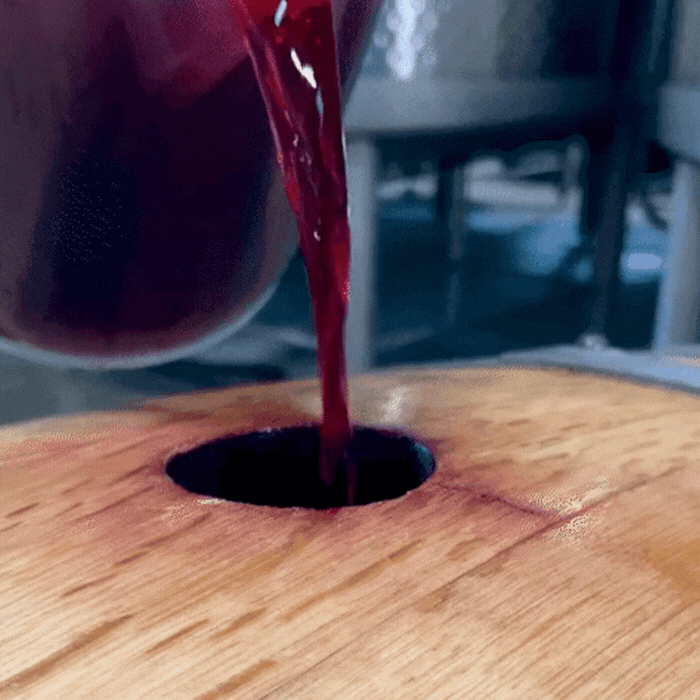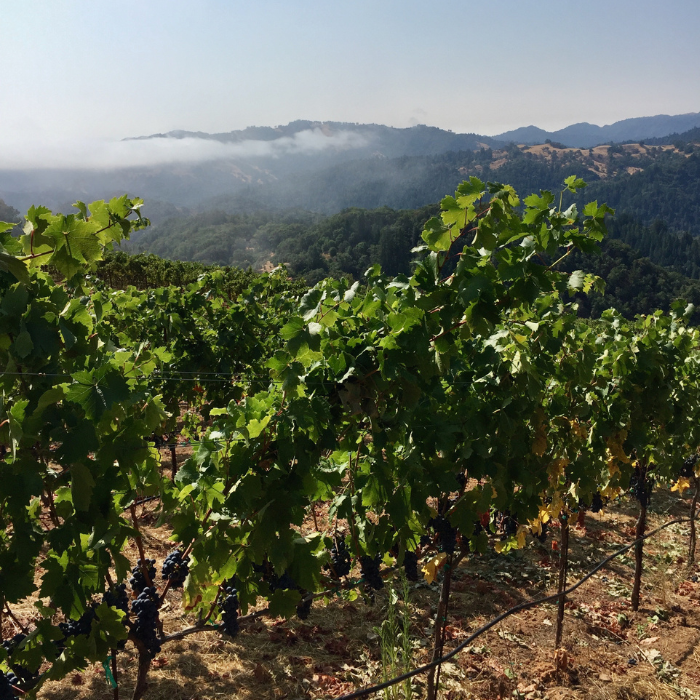The 101 on Red Zinfandel: Everything You Need To Know
Red zinfandel is making a comeback. I have always loved drinking and crafting red zinfandel, especially with my fruit sourced from Rockpile in Sonoma County.
I believe we can all agree that red zinfandel elicits strong opinions and reactions, both favorable and snarky. Stereotypes about red zinfandel abound.
Wine lovers (who have never tried my red zinfandel) complain that red zinfandel is too hot (alcoholic), peppery, jam-y, prune-y, and don’t play well with food. I am here to plant a flag and throw down the gauntlet.
I am here to argue that red zinfandel sourced from the Rockpile AVA is delicious, balanced, luscious, approachable, aromatic, food friendly, and blows every unpleasant zin stereotype out of the water.
My Rockpile red zinfandel is rocking. Yeah, it’s true, I’m mostly a pinot girl. But let me tell how my love affair with Rockpile AVA red zinfandel began. It’s a story that predates my work as a winemaker, winding back to my being a wine lover and wine consumer, just like you.
Let’s time travel back to 2005 or 2006, when Brian and I celebrated “Wine Wednesday,” a summertime tradition of tasting wine as soon as we dropped our (then) little people at day camp.
It All Started with Wine Wednesday…
One legendary Wine Wednesday took us in search of the elusive red zinfandel from the Rockpile AVA. Rockpile remains a relatively new AVA, established in 2002. It lies at high elevations (between 800 feet and 2,000 feet above sea level) in a remote area northwest of our home base in Healdsburg, in the hills above Lake Sonoma.
In fact, 800 feet elevation is a vineyard AVA requirement, since that altitude marks the fog line, and all Rockpile AVA vineyards are above the fog line. As it happens, this placement is advantageous for red zinfandel, which is rot prone, thin skinned, large globed, and tightly clustered.
Being planted above the fog and moisture makes Rockpile red zinfandel virtually rot-free. Although accounts vary, we’ve been told that only 11 vineyards are planted in this somewhat secretive AVA, comprising a total of about 100 acres of vines.
There are no wineries located in the AVA, just remote farming operations. Rockpile is an AVA dedicated to ag first, wine growing before hospitality, tasting rooms, or winery logo swag. It’s not like I’m biased or anything, but I think Rockpile is the best place in the world to grow red zinfandel.
Before I became a Rockpile vintner myself…
I was a wine drinking enthusiast, just like you.
And I tasted many a red zinfandel before discovering Rockpile. And when I did, it was zintillating, zinspired, zintastic perfection! In fact, the red zinfandel we’ve tasted from the Rockpile AVA appealed to us because of their relative “un-zinfulness”; that is, the lack of heavy jammy fruit and hot alcohol that characterized the soulless and mass-marketed California zinfandels.
Rockpile red zinfandel, by contrast, showcases great berry elements (usually blueberry and blackberry) with minerality, nice acidity, and very smooth tannins. In other words, red zinfandel from Rockpile displays food friendly and mouthwatering balance.
There is thankfully no jam to be found anywhere near these wines. Red zinfandel from Rockpile is great wine to pair with food but also displays enough complexity to drink on its own.
Frankly, the most challenging problem facing red zinfandel from Rockpile is finding one. With so few acres planted to red zinfandel and a limited supply of red zinfandel grapes available to only a handful of wineries (who either own the vineyards or have long term leases on the grapes up there), getting some of this prized juice is no easy feat.
I feel incredibly lucky to be among the lucky winemakers purchasing red zinfandel from Rockpile. In fact, I have been crafting red zinfandel from Rockpile since 2009.
Perhaps you’re curious what makes Rockpile such an ideal climate for cultivating red zinfandel. The terroir up at Rockpile is a byproduct of a “weather inversion” phenomenon.
Rockpile is nestled in the sky, with the AVA boundary starting at 800 feet elevation and vineyards planted on ridgetops high above Lake Sonoma. Lake Sonoma is a manmade lake, dug out by the army corps of engineers.
What nobody realized when the lake was constructed would be its effect on the hilltops. The lake serves to suck down the fog, so the vines sit above the fog line. Since red zinfandel grapes are tightly clustered and prone to rot, being above the fog line eliminates the moisture pressure.
Furthermore, gentle 2-3 mph maritime breezes from the Pacific Ocean keep the Rockpile red zinfandel grapes cooler and drier than on the valley floor. This allows the red zinfandel grapes to ripen more slowly and evenly, without troublesome daytime heat spikes. Red zinfandel grown in the Rockpile AVA is consistently high quality, year in, year out.
But again, only a small fraction of the entire AVA is planted to red zinfandel; the majority of the Rockpile territory is unplanted, uninhabited open space. And finding a winery that crafts red zinfandel from Rockpile requires some sleuthing and investigation. Very few winemakers are lucky enough to play with red zinfandel from Rockpile.
Have I piqued your curiosity yet?
Are you excited to taste a red zinfandel from Rockpile?
I hope I have convinced you that red zinfandel is not only delicious but resplendent with personality, terroir-specific flavors, and food-friendly balance. If you’d like to try my red zinfandel from Rockpile, your best tack is to sign up for our mailing list.
My Rockpile red zinfandel is released once a year, by allocation, meaning we offer first dibs to our mailing list members first. But if you’re visiting Sonoma County, please do consider a private Bruliam Wines tasting and tour with me.
Sometimes I’ve been known to pour my Rockpile red zinfandel in the tasting room. Believe me, I would never taste you on anything without the opportunity to buy a bottle; that would just be plain mean!
At Bruliam Wines, we aim to make your palate happy. Uncorking a bottle of my red zinfandel from Rockpile, Sonoma is the best way to make your tastebuds smile. Here’s to red zinfandel.
Cheers!






